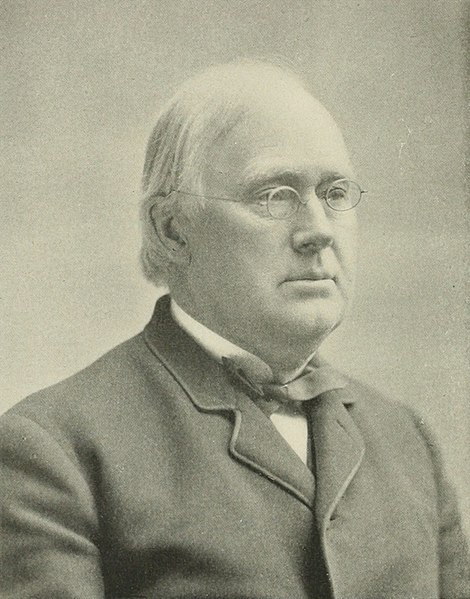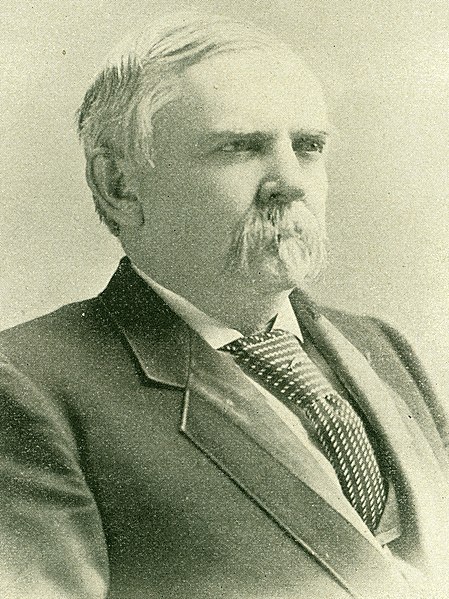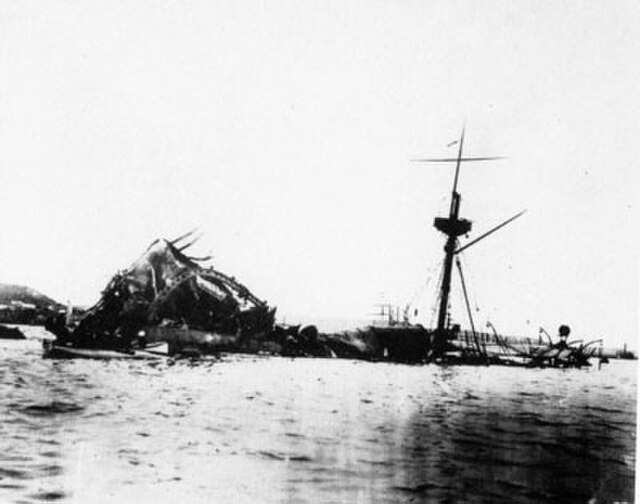The Treaty of Peace between the United States of America and the Kingdom of Spain, commonly known as the Treaty of Paris of 1898, was signed by Spain and the United States on December 10, 1898, that ended the Spanish–American War. Under it, Spain relinquished all claim of sovereignty over and title to territories described there as the island of Porto Rico and other islands now under Spanish sovereignty in the West Indies, and the island of Guam in the Marianas or Ladrones, the archipelago known as the Philippine Islands, and comprehending the islands lying within the following line:, to the United States. The cession of the Philippines involved a compensation of $20 million from the United States to Spain.
John Hay, Secretary of State, signing the memorandum of ratification on behalf of the United States
Image: Senator George F. Hoar as a Member of the 55th US Congress
Image: Senator Eugene Hale as a Member of the 55th US Congress
Image: George G. Vest (10507061813) (2)
The Spanish–American War began in the aftermath of the internal explosion of USS Maine in Havana Harbor in Cuba, leading to United States intervention in the Cuban War of Independence. The war led to the United States emerging predominant in the Caribbean region, and resulted in U.S. acquisition of Puerto Rico, Guam, and the Philippines. It also led to United States involvement in the Philippine Revolution and later to the Philippine–American War.
(clockwise from top left) Signal Corps extending telegraph lines USS Iowa at the Victory Fleet Review in August 1898 in New York Harbor Filipino soldiers wearing Spanish pith helmets outside Manila The Spanish signing the Treaty of Paris Roosevelt and his Rough Riders at San Juan Hill Replacing of the Spanish flag at Fort San Antonio Abad (Fort Malate)
A Spanish propaganda drawing published in La Campana de Gràcia (1896) by Manuel Moliné criticizing U.S. behavior regarding Cuba. Upper text (in old Catalan) reads: "Uncle Sam's craving", and below: "To keep the island so it won't get lost".
An American cartoon published in Judge, February 6, 1897: Columbia (representing the American people) reaches out to the oppressed Cuba (the caption under the chained child reads "Spain's 16th century methods") while Uncle Sam (representing the U.S. government) sits blindfolded, refusing to see the atrocities or use his guns to intervene (cartoon by Grant E. Hamilton).
The sunken USS Maine in Havana harbor








